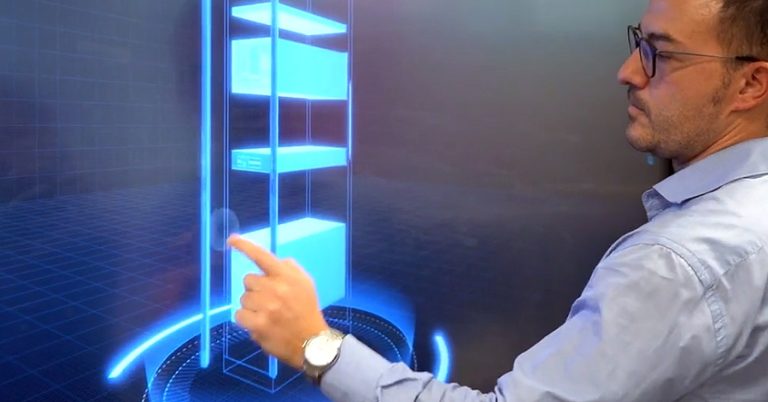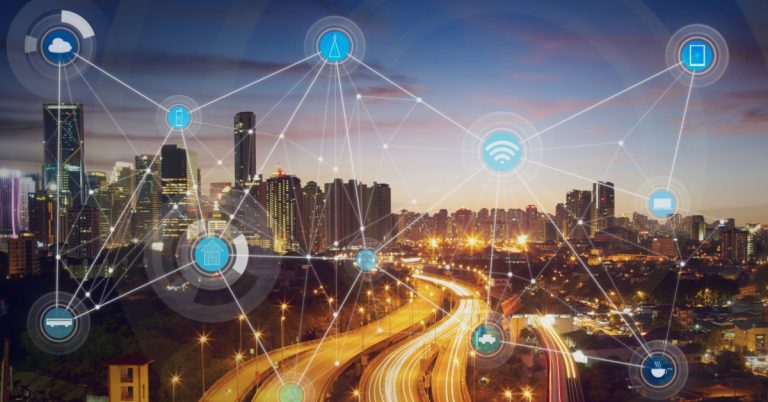The convergence of AI and fiber optic is revolutionising several areas of city life, underscoring the need for continuous innovation in network infrastructure.
AI and fiber optic are an inseparable pair and the capabilities of today’s artificial intelligence are increasingly pushing the limits of fiber optic networks.
High bandwidth and low latency are required to support modern AI and machine learning applications. Otherwise there is a risk that artificial intelligence will become… much less intelligent!
We take a look at the future of fiber optic networks in the AI era.
How is the relationship between AI and companies changing?
According to research by the Politecnico di Milano, the artificial intelligence market in Italy is experiencing unprecedented development. In 2023 it reached a value of €760 million, representing a growth of +52%, significantly higher than the +32% in 2022.
The research showed that 61% of large companies have initiated a project related to AI applications. Most investments are in textual analysis solutions, semantic and classification searches, and document summary and explanation.
There are still few Generative AI projects – about 5% of the total – but 2 out of 3 companies have discussed this type of application internally. Of these, about 17% have started some kind of experimentation.
Finally, according to a McKinsey study, the companies that are at the forefront of adopting artificial intelligence-based solutions grow much faster: about 10-20% faster than their competitors over a period of 2-3 years.
The difference between inference and learning in AI processes
The AI era is rewriting the way we understand business processes, especially when it comes to data analysis. The most common processes involving AI in business are inference and learning.
The learning process takes place over a longer period of time and involves training AI based on data models. Inference processes involve use of these models after the training has taken place. A typical inference process is real-time decision-making.
For inference processes to run smoothly, high computing power is not required, but very high data rates are needed so that the AI can perform its task in real time.
When it comes to learning, however, there are different requirements. Since the data sets used for training are considerable – hence the term big data – high computing power and a high bandwidth will be required for the transfer of information throughout the training period.
A practical example of learning and inference is the integration of AI in a security circuit based on video cameras. In this scenario, artificial intelligence is trained to recognise suspicious patterns and behaviour. When AI algorithms are integrated into surveillance circuits, inference processes allow artificial intelligence to autonomously implement defensive strategies if these behaviours are recognised by cameras.
Artificial intelligence and FTTH fiber optic networks
In the current technological scenario, there can be no artificial intelligence without the fiber optic network. In some ways, this is a virtuous circle, since both factors support each other in the relative technological advances. The more powerful AI becomes and the more it can analyse ever larger amounts of data, the greater the need for infrastructure that can support it. Similarly, the more fiber optic networks enable artificial intelligence processes, the more the latter can offer ever higher performance, opening up new opportunities for use. The convergence of AI and fiber optic is revolutionising sectors such as healthcare and smart cities, highlighting the need for continuous innovation in network infrastructure.
Connectivity based on ultra-broadband and low latency can support advanced AI processes that result in greater efficiency, reliability and scalability in business and city processes.
Here are some examples:
- Metropolitan or local transport networks: thanks to the low latency of fiber optic infrastructure, inference processes can be used for automated transport management, with real-time decision-making and uninterrupted data transmission
- Self-driving vehicles: as in the previous example, for vehicles to travel safely on city streets, it is essential that the AIs driving them can interact with each other in real time, without lag or delays in communication
- Telemedicine services: AI’s predictive capabilities in healthcare rely on high-speed connections for processing data in comparing clinical cases and creating diagnoses
- Smart cities: the interconnection of cameras and sensors through the use of fiber optics enables the management of car traffic and urban safety through the use of AI and big data, ensuring greater efficiency and responsiveness of city infrastructure.
- Industry 4.0/5.0: here too, the combination of AI and fiber optic improves the performance of sensors and industrial robots, increasing the accuracy, speed and reliability of production operations.
- Gaming: the low latency and high speed of fiber optic networks are essential. Artificial intelligence can improve the interaction between players and game environments, providing smooth and seamless matches.
Ultra-broadband and low latency: key requirements
For inference algorithms to work correctly, ultra-broadband and low latency are a prerequisite. AI functions based on a constant flow of data that is continuously generated and processed.
An FTTH fiber optic network such as that of Open Fiber possesses the 3 fundamental characteristics to support the ever-growing needs of artificial intelligence:
- Reliability: the composition and structure of the cables allow not only real-time data transmission but also the identification of any faults or tampering in a timely and precise manner. This is also reflected in the security of the data itself, which can be preserved more efficiently thanks to the implementation of advanced protection and encryption measures
- Fast transmission speed and low latency: in real-time applications, such as video analysis, a low-latency connection is crucial to ensure immediate and accurate responses. Connection stability is equally crucial: speeds that vary too much over time could lead to packet loss in the long run
- Adaptability: fiber optic is future-proof, i.e. it is structured to adapt to future technological evolutions. As AI systems are constantly evolving and becoming more demanding, the ability to increase bandwidth over time is a further benefit for fiber optic
The cabling of the fiber optic network continues unabated. Follow the progress of the project on the dedicated page.










